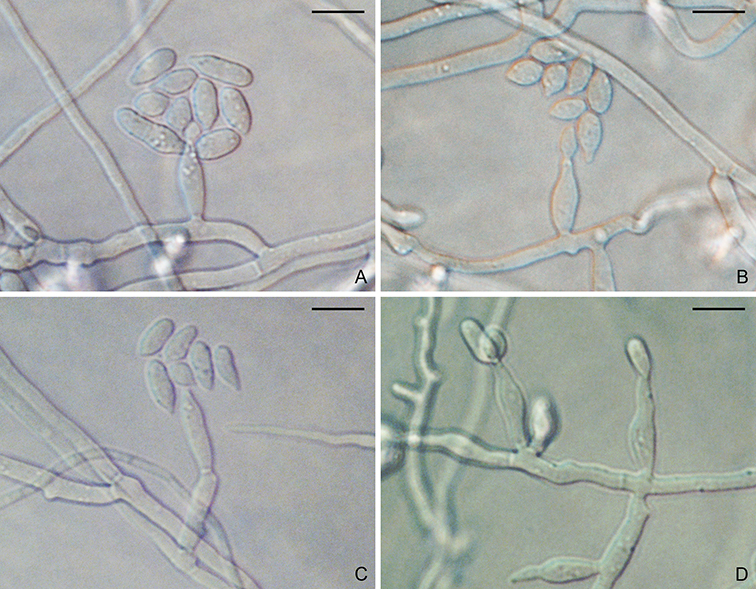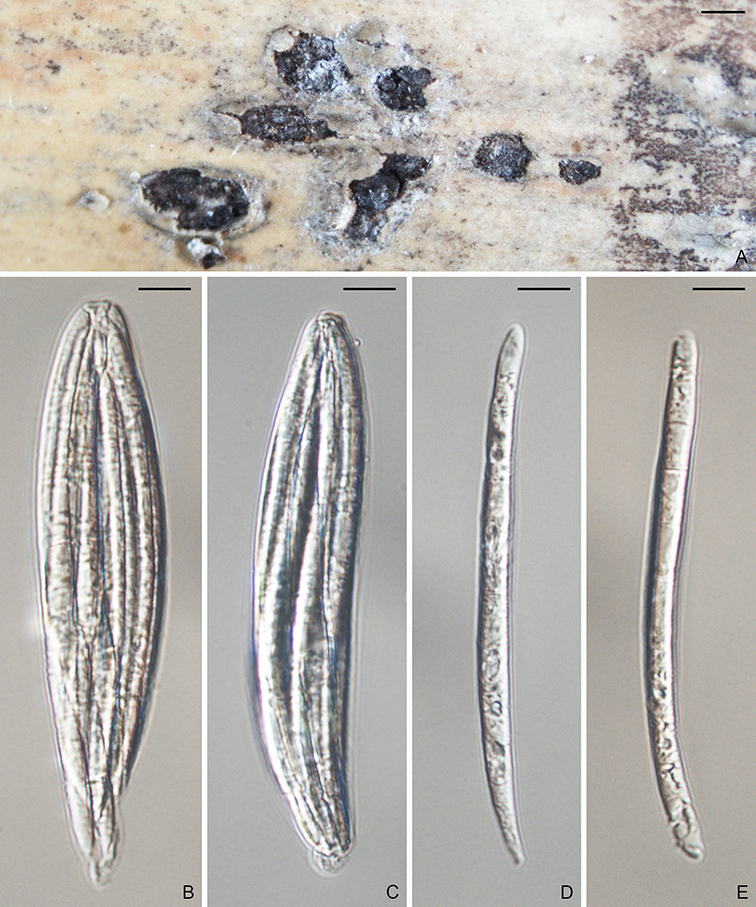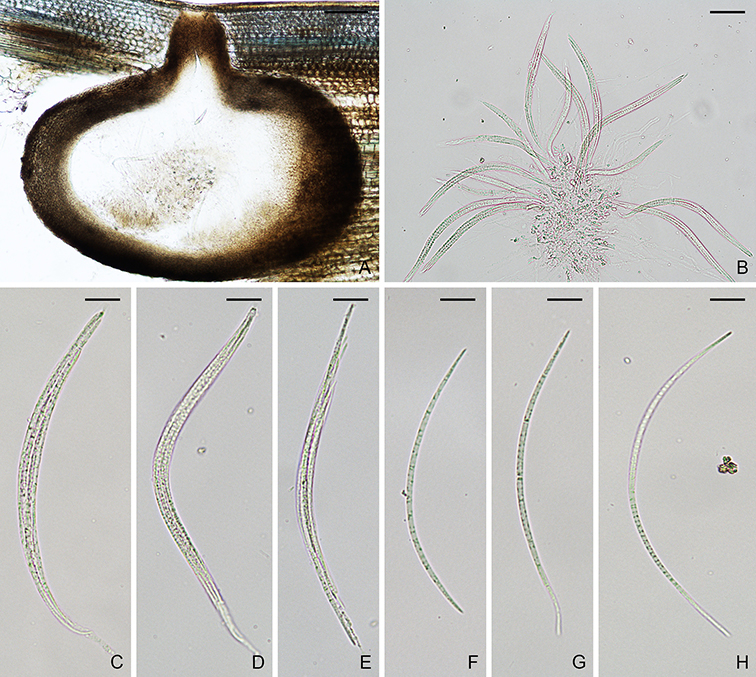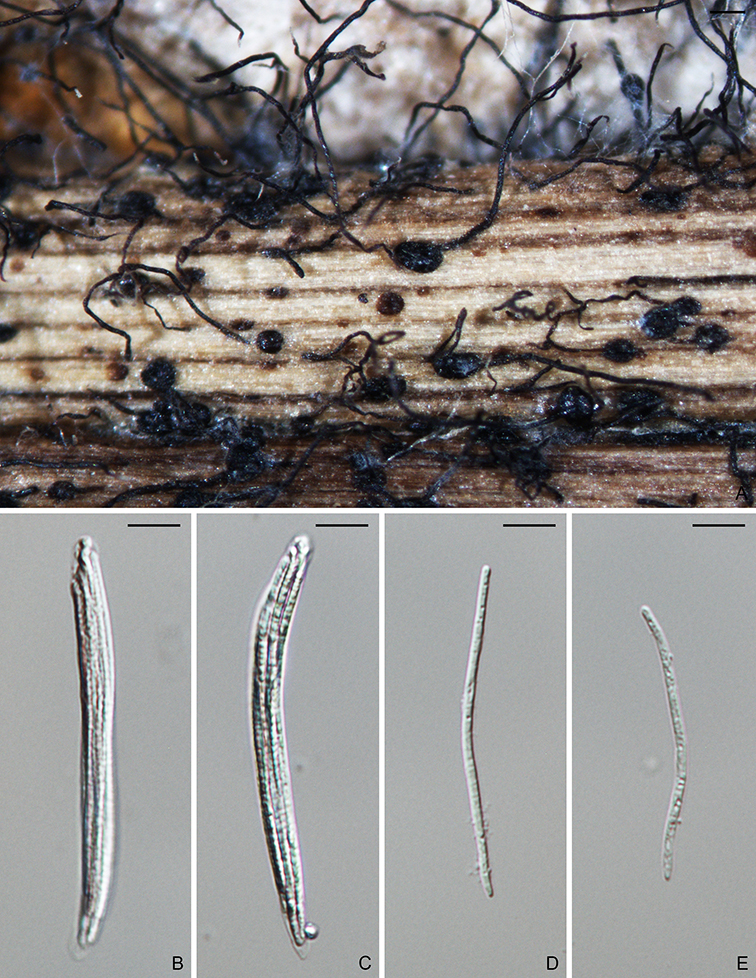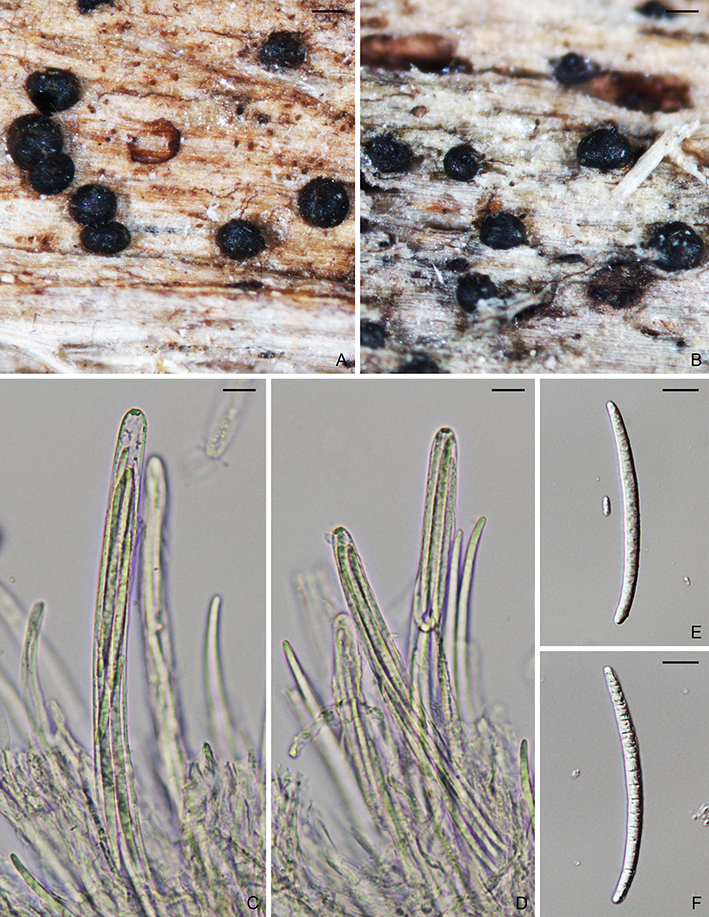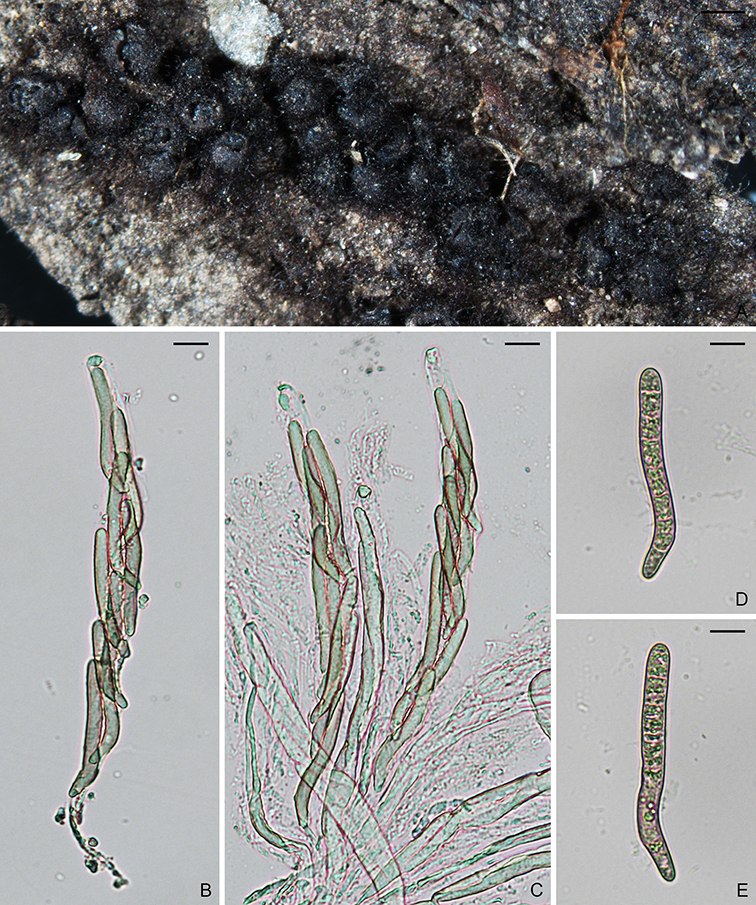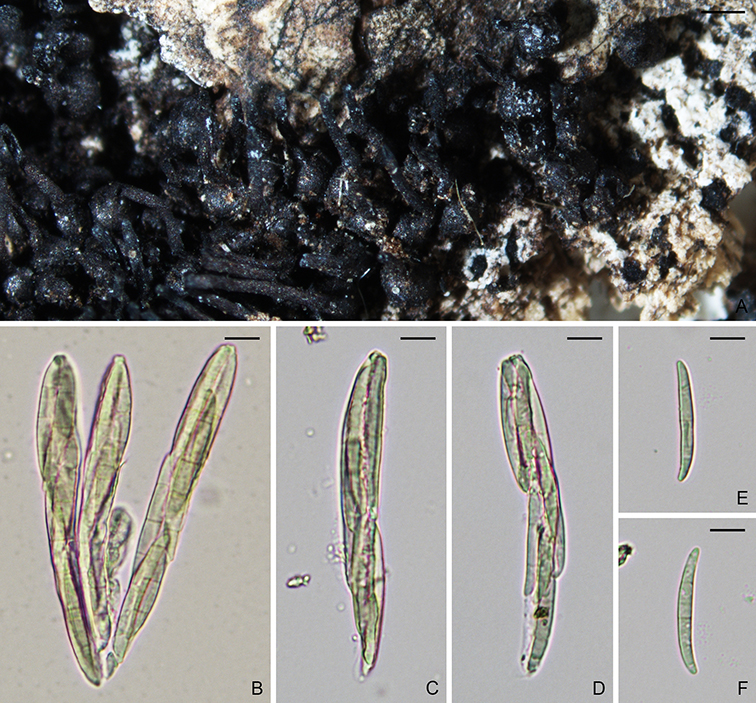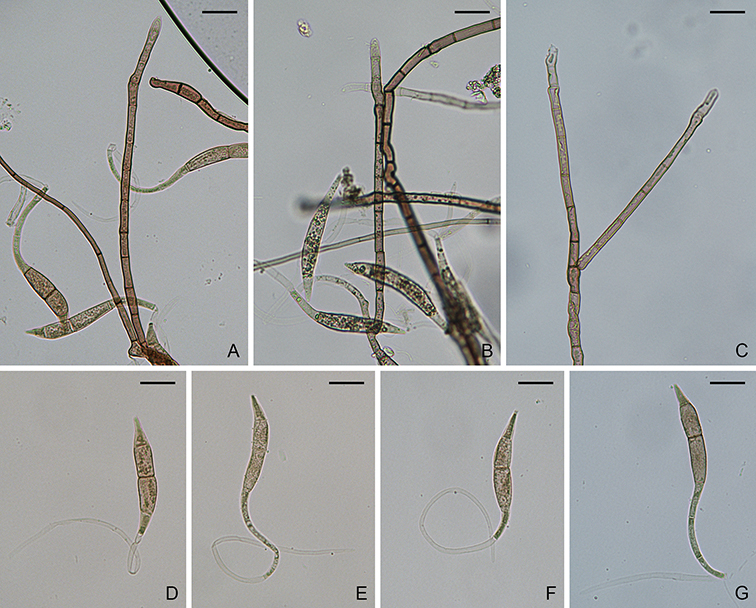
Figure. Nakataea serpens (NYBG985747). A–C. Conidiophores. D–G. Conidia. Scale bars: A–G = 20 µm.
Nakataea serpens Shearer & J.L. Crane, Trans. Br. mycol. Soc. 73(2): 370 (1979)
MycoBank: MB318483.
Hyphae branched, septate, light brown to brown, smooth, 1–3 µm diam. Conidiophores solitary, erect, straight or curved, unbranched, 4–9-septate, brown, smooth, 100–250 × 3.5–6.5 µm. Conidiogenous cells terminal, pale brown, 20–120 × 4–6 µm, with several protruding denticles, 1–2 × 1.5–2 µm. Conidia solitary, curved, smooth, 4-septate, not or slightly constricted at septum; main cells falcate, brown, 55–135 × 7–9 µm; apical cell sigmoid, hyaline to pale yellow, 80–140 × 1.5–3 µm. Sexual state unknown.
Typification: Holotype ILLS38410. Isotypes ILLS42909, NY985747.
Gene sequences: Unknown.
Specimens examined: USA, Illinois, Mason County, Quiver Creek, from plant debris, 11 Aug. 1978, C.A. Shearer, CS-612-1 (ILLS38410, ILLS42909, NY985747).
Hosts/substrates: On plant debris.
Distribution: USA (Illinois).
Copyright 2022 by The American Phytopathological Society. Reproduced, by permission, from Luo, J., and Zhang, N. 2022. The Rice Blast Fungus and Allied Species: A Monograph of the Fungal Order Magnaporthales (https://my.apsnet.org/APSStore/Product-Detail.aspx?WebsiteKey=2661527A-8D44-496C-A730-8CFEB6239BE7&iProductCode=46826). American Phytopathological Society, St. Paul, MN.
